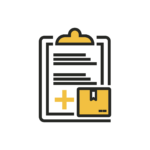Shipping to Vietnam
Require shipping to Vietnam? Enjoy competitive rates on a full suite of freight forwarding services when you engage Express Freight Management!
Our dedicated team of subject matter experts will work closely with you to devise a customized solution that satisfies both your needs and budget constraints. Discover the variety of freight forwarding services we offer below:
Free Quotation For Your Shipment
Items Prohibited or Restricted for Export in the United States
Useful resources:
Items Prohibited Or Restricted For Import Into Vietnam
Shipping Process from the United States to Vietnam
Understanding the shipping process is crucial for a smooth and efficient transfer of goods. This section provides a comprehensive overview of the steps involved in transporting your cargo from the United States to Vietnam, ensuring timely and secure delivery.
Upon engagement and acceptance of our quotation, Express Freight Management will provide you with necessary materials including packing supplies, boxes, international customs clearance forms, and shipping labels. These will facilitate the shipping process and ensure compliance with regulations.
After packing your items, a designated truck will pick up the boxes and transport them to a consolidation warehouse.
At the warehouse, your goods will be consolidated and packed into a container, ready for loading onto the ship bound for Vietnam.
A few days before reaching, the ship’s captain will submit a report to the Vietnam Customs detailing the vessel, crew, and cargo.
Upon arrival, the container will be unloaded using large cranes.
Customs officials will inspect selected containers to ensure the contents match the information on the submitted documents.
Once cleared by customs, the container will be transported to an import distribution center, where the cargo will be deconsolidated by shipment.
The sorted cargo will be delivered to the final destination via local trucking services.
Commonly Shipped Items From USA To Vietnam
Common goods shipped from the United States to Vietnam include:
- Machinery and equipment.
- Electronic products and components.
- Vehicles and automotive parts.
- Chemicals and plastics.
- Agricultural products (such as soybeans, corn, and wheat).
- Medical equipment and pharmaceuticals.
- Textiles and apparel.
- Industrial supplies and materials.
- Consumer goods (such as electronics, appliances, and furniture).
- Aerospace products and parts.
Shipping Methods Available
When shipping goods from the US to Vietnam, there are two primary modes of transportation: air and sea freight. Additionally, land transportation via trucking may be employed for seamless door-to-door delivery.
Benefits Of Engaging A Freight Forwarder
Hassle-Free Process
Freight forwarders will handle all the necessary paperwork to obtain customs clearance. They’ll also work with the appropriate carriers to ship your goods safely to your desired destination.
Cargo Security
Freight forwarders are well-equipped with the right tools to handle your goods with maximum care.Apart from providing cargo insurance, they also have efficient tracking systems for you to keep track of the status of your shipment.
Duties and Taxes for Shipments from the United States to Vietnam
No taxes will be levied on goods exported from the United States.
However, when shipping goods from the United States to Vietnam, you’ll need to consider the duties and taxes that may apply. These costs depend on factors like the type of goods, their value, and Vietnam’s customs regulations. Here’s a breakdown to help you understand what to expect:
Vietnam’s Customs Valuation Method
Vietnam uses the CIF (Cost, Insurance, and Freight) method to calculate duties and taxes. This means the taxable value includes the cost of the goods, plus insurance and shipping costs to the point of entry in Vietnam. For example, if you’re shipping $1,000 worth of goods with $200 in shipping and insurance, the customs value would be $1,200.
Payment and Process
Duties and taxes are typically paid by the importer in Vietnam before customs clearance. If you’re shipping commercially, your Vietnamese buyer or their customs broker usually handles this. For personal shipments, the carrier (e.g., FedEx, DHL) might collect these fees upon delivery, depending on the Incoterms (e.g., DDP or DDU).

WHY CHOOSE EXPRESS FREIGHT MANAGEMENT?
Express Freight Management
Express Freight Management is your one-stop shipping solutions provider. With a global reach and a commitment to customer satisfaction, we ensure smooth and efficient shipping from start to finish.
FAQs About Shipping To Vietnam
How Much Would It Cost To Ship To Vietnam?
The cost of shipping to Vietnam can vary widely depending on several factors, including:
- Origin Country: Rates differ significantly based on the sender’s location due to varying distances, customs regulations, and delivery complexities.
- Package Details:
- Weight: Heavier packages cost more.
- Dimensions: Larger packages, even if light, can increase costs due to volume.
- Type of Goods: Certain items (e.g., electronics, hazardous materials) might incur additional fees or require special handling.
- Shipping Method:
- Air Freight: Generally faster but more expensive.
- Sea Freight: Slower but often more economical for heavy or bulk shipments.
- Additional Services:
- Tracking
- Insurance
- Express or Expedited Shipping
- Customs Clearance (in some cases, this might be an extra cost)
Remember, the most accurate shipping quote will depend on the specifics of your shipment. Always check with the shipping providers for the most current and detailed pricing.
What Can I Not Ship To Vietnam?
When shipping to Vietnam, there are certain items that are prohibited or restricted due to the country’s customs regulations. Here’s a list of items you generally cannot ship to Vietnam, based on common prohibitions enforced by Vietnamese authorities:
- Weapons and Ammunition: This includes firearms, explosives (except industrial explosives with proper permits), military equipment, and any items classified as weapons.
- Narcotics and Drugs: Illegal substances like cocaine, heroin, and marijuana are strictly prohibited. Medications containing narcotics require special documentation and approval.
- Pornographic Materials: Explicit magazines, videos, or any content deemed pornographic is banned.
- Counterfeit Goods: Items infringing on intellectual property rights, such as fake designer products or pirated software, are prohibited.
- Hazardous Materials: Chemicals, toxins, radioactive substances, and other dangerous goods that pose risks to health or safety are not allowed without specific permits.
- Endangered Species and Products: Items derived from endangered animals or plants (e.g., ivory, rhino horn, coral, or certain traditional medicines) are banned under both Vietnamese law and international agreements like CITES.
- Used Consumer Goods: Items like second-hand clothing or electronics are generally prohibited unless you have an import license from the Ministry of Information and Communications (for electronics).
- Fireworks and Sky Lanterns: These are banned, except for signal flares used for navigational safety under specific guidance.
- Devices Interfering with Speedometers: Equipment designed to disrupt vehicle speed monitoring is prohibited.
- Certain Publications: Materials banned from circulation in Vietnam, such as those deemed offensive to Vietnamese culture or traditions, are not allowed.
- Radio Equipment: Devices that don’t comply with Vietnam’s radio frequency regulations are prohibited.
Additionally, some items may be restricted rather than fully prohibited, meaning they can be shipped with proper permits or documentation. Examples include alcohol, tobacco, pharmaceuticals, and certain electronics. With rules ever-changing, it is best to check with an experienced freight forwarder like Express Freight Management for the most current regulations so as to avoid delays, confiscation, or penalties.
What Documents Do I Need When Shipping to Vietnam?
When shipping to Vietnam, the specific documents you need depend on the type of goods, their value, and whether it’s a commercial or personal shipment. Below is a general list of required documents based on Vietnam’s customs regulations and international shipping practices:
For Most Shipments (Personal and Commercial):
- Commercial Invoice:
- Details the sender, recipient, and a full description of the goods (quantity, type, value, and purpose).
- Must include the total value in a recognized currency (often USD or VND) and be signed by the shipper.
- For personal shipments, this can sometimes be replaced by a simpler value declaration, but check with your courier.
- Packing List:
- A detailed breakdown of the shipment contents, including item quantities, weights (gross and net), and packaging type (e.g., boxes, pallets).
- Helps customs verify the shipment matches the invoice.
- Bill of Lading (BOL) or Air Waybill (AWB):
- BOL for sea freight or AWB for air shipments, issued by the carrier.
- Acts as a contract of carriage and proof of shipment.
- Certificate of Origin (COO):
- Required for some goods to determine eligibility for trade agreements or tariffs (e.g., ASEAN Free Trade Area benefits).
- Must specify where the goods were manufactured, often needing official certification from the exporting country.
For Specific Goods (Restricted or Regulated):
- Import Permit/License:
- Needed for restricted items like pharmaceuticals, alcohol, tobacco, electronics, or industrial equipment.
- Issued by relevant Vietnamese ministries (e.g., Ministry of Health for drugs, Ministry of Industry and Trade for machinery).
- Health or Safety Certificates:
- For food, cosmetics, or medical items, you may need a Certificate of Free Sale (CFS) or a sanitary/phytosanitary certificate to prove compliance with Vietnamese standards.
- Specialized Documentation:
- Medications: Prescription or doctor’s letter, plus approval from Vietnam’s Ministry of Health if narcotics are involved.
- Plants/Animals: Quarantine certificates or CITES permits for endangered species.
- Electronics: Conformity certificates for radio frequency compliance from the Ministry of Information and Communications.
Additional Notes:
- Customs Declaration Form: Often completed by the shipping company or recipient in Vietnam, but you may need to provide details for this.
- Tax ID or Recipient Info: For commercial shipments, the recipient’s tax code or business registration may be required. For personal shipments, a copy of the recipient’s ID or passport might be requested.
- Language: Documents should ideally be in English or Vietnamese. If in another language, a translated version may be required by customs.
- Number of Copies: Typically, 2-3 originals or certified copies of each document are needed, depending on the carrier and customs process.
How Long Does It Take To Ship To Vietnam?
Shipping times to Vietnam from the U.S. vary based on the method you choose:
- Air Freight (Economy): 7-14 business days. A cost-effective option for businesses with less time-sensitive goods.
- Sea Freight: 20-40 days (port-to-port, e.g., Los Angeles to Hai Phong or Ho Chi Minh City). Perfect for large shipments or bulk cargo, with additional inland delivery time of 2-7 days.
Customs clearance typically adds 1-5 days, though delays can occur if documentation is incomplete or duties apply (especially for items valued over $40 USD). Peak seasons or holidays like Tet (Vietnamese Lunar New Year) may extend timelines. Contact us with your shipment details for a tailored estimate and to ensure smooth delivery!























